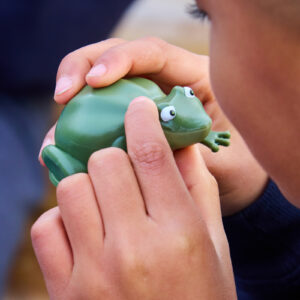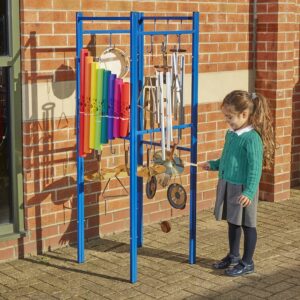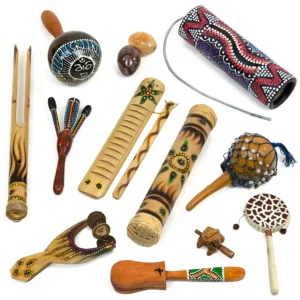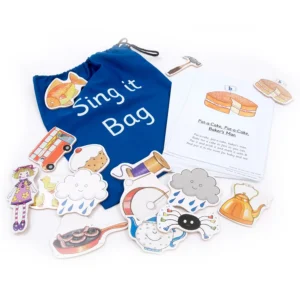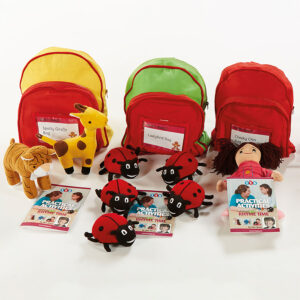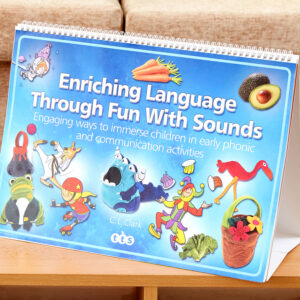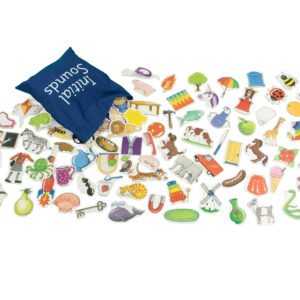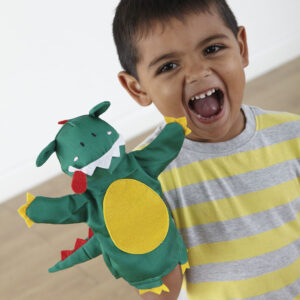Before children can learn to read or write, they need to learn to listen. Not just to the grown-ups around them—but to the world, to each other, and to the sounds that make up language. That’s where Phase 1 Phonics comes in.
This stage is full of energy, exploration, and discovery. For this phase, we invite children into a world of rhythm, rhyme, and sound play—laying the groundwork for confident, capable communicators and future readers.
What is Phase 1 Phonics?
Phase 1 Phonics is all about sound. Before a child can start connecting letters to sounds in later phonics phases, they need to hear those sounds in the first place. This is what Phase 1 Phonics aims to do.
Designed for children in nursery and preschool, this phase focuses on:
- Tuning in to everyday sounds
- Hearing patterns in speech
- Playing with the rhythm, rhyme and the flow of language
- Blending and segmenting spoken words
At this stage, there is no pressure to start reading or writing. Phase 1 meets children right where they are—curious, playful, and eager to make sense of their world.
The Seven Aspects of Phase 1
Phase 1 is divided into seven aspects, each offering a different way for children to build their sound awareness. These don’t have to be taught in any particular order. You will find that they often overlap through the natural rhythm of your day.
1. Environmental Sounds
This is where sound awareness begins. Children learn to notice the noises around them—from the rumble of traffic and the rustling of leaves to the ticking of a clock. These are often the sounds we adults tune out, but to a child, they’re fascinating and an important part of learning.
In practice:
- Go on a sound walk and pause to name what you hear
- Make a sound map of your outdoor space
- Add everyday sounds into storytelling using props or voice effects
- Sound bingo
Resources to consider:
Try pre-recording different sounds on recordable devices so that the children can press and listen before guessing the sound. Children can also press the different pre-recorded sound buttons during a story to create the sound effects.
2. Instrumental Sounds
Maracas, drums, claves—or a good old saucepan and wooden spoon! Children explore how different instruments sound and how those sounds can be used to express ideas or copy patterns.
In practice:
- Create a sound guessing game with hidden instruments
- Set up a rhythm pattern and see if children can copy or continue it
- Explore loud/quiet and fast/slow
- Sort the instruments into the different sounds they make or match to pictures e.g. the drum goes with the elephant whilst the claves go with the picture of a horse.
Resources to consider:
If possible, provide a variety of instruments with a range of sounds for the children to explore. Do you have access to instruments both indoors and outside so that the children can explore with musical instruments in their preferred place of learning? Why not add instruments from different parts of the world? This not only creates interest but can lead on to great discussions.
3. Body Percussion
Instruments are great but let’s not forget that our bodies can become the orchestra too. Encourage children to create different sounds by clapping their hands, stomping their feet, patting their knees, and clicking their fingers. Body percussion is brilliant for building rhythm and sequencing skills.
In practice:
- Play clap and repeat games
- Make up movement patterns during tidy-up time
- Using body sounds alongside songs and stories
4. Rhythm and Rhyme
The heartbeat of Phase 1 – rhythm and rhyme. Rhymes, poems, chants and songs help children hear the natural flow of language and spot patterns in words.
Developing young children’s awareness of rhyme and rhythm can have a significant positive impact on their early literacy skills.
Education Endowment Foundation (EEF), Preparing for Literacy, 2018
In Practice:
- Choose a ‘rhyme of the day/week’ and repeat it regularly so that the children become familiar with it
- Pause during rhymes or when reading rhyming stories to let children finish the line
- Play “rhyme or no rhyme?” games with picture cards or silly words
Resources to support:
Have a range of books available to share with the children that include rhymes, poems and songs.
Why not have a listening station where children can listen to their favourite songs and rhymes. They may even want to have a go at recreating them.
Introduce children to rhyming bingo – tunes children into rhyming whilst embedding important skills such as turn taking and following rules.
Provide rhyme time bags where the children can take home their favourite rhymes to share with their family.
5. Alliteration
Repeating the same sound at the start of words gives children a real ear for language. It’s also a brilliant excuse for some silliness.
In practice:
- Make up alliterative names like “Jumpy Jessica” or “Amazing Ahmed”. Extend this further by making up alliterative sentences or by sharing tongue twisters.
- Fill a basket or bag with items that start with the same sound
- Start the day with a basket/bag sound challenge – Can they guess the sound?
Resources to support
Why not create alphabet sound bags for the children to explore. Add collections of multi-sensory objects that begin with the same sound for the children to explore.
Provide the children with objects or resources that encourages children to identify and sort the items by their initial sound. Can the children create alliterative phrases for the objects?
6. Voice Sounds
High, low, loud, quiet, squeaky, growly—children explore how their voices can change. It’s expressive, confidence-building, and often hilarious. Some children will be happy to make different sounds with their voices whilst some might need a puppet to help them build confidence.
In practice:
- Use puppets or characters to model different voice types
- Add sound effects to stories told aloud
- Play call-and-response games using changing voices
- Sing songs and rhymes that encourage children to change their voices, for example, “Boom Chicka Boom”
Resources to support:
Some children are more comfortable changing the tone of their voices if behind a character so having puppets and puppet theatre available may encourage some children to practise exploring with their voice. Alternatively, provide recordables for the children to record on.
7. Oral Blending and Segmenting
This is the skill that starts to link sound to meaning. Children will start by segmenting (breaking words down into their individual sounds) before blending them back together to make a word (c-a-t = cat)
In practice:
- Throughout the day, segment words in sentences for the children to blend – “Can you find your h-a-t?”
- Use robot talk or Fred talk throughout the day in small, playful bursts – Not all the time though as the children may find this rather annoying or think that this is the norm!
Resources to support:
As children begin to recognise certain sounds and graphemes (moving onto Phase 2 Phonics), you may want to provide resources such as magnetic letters, letter paint stampers or weaving letters for the children to explore.
Why Phase 1 Phonics Matters
Phase 1 is an essential part of learning in early years. When children are confident in listening, hearing patterns, and playing with sounds, they have everything they need to make sense of phonics when it arrives.
Phase 1 supports:
- Listening and attention
- Speech and language development
- Phonemic awareness (the foundation for decoding and spelling)
- Confidence and curiosity around communication
- A love of language that lasts well beyond the early years
For children with delayed language, communication needs, or EAL backgrounds, it offers a low-pressure, joyful way into spoken language and sound structure.
You don’t need a structured lesson or formal sessions. In fact, Phase 1 is at its best when it’s part of the everyday rhythm of your setting. A little here, a little there – woven into play, routines, and conversations.
Here’s how you can keep it going throughout the day:
- Sound walks during outdoor play—what can we hear today?
- Singing and rhyme repetition during transitions or different routines
- Alliteration games during circle time
- Robot talk while getting ready: “Time for us to s-i-ng”
- Storytelling with sound effects, voices, and body percussion
- A sound of the day challenge with matching objects and actions
Most importantly, be the role -model and show your love for sounds and language. Be the grown-up who notices sounds, plays with words, and joins in the fun.
Final Thoughts
Phase 1 Phonics might look and sound simple, but it’s the starting point for so much and can really impact our children’s futures. When we give children time to explore and enjoy sound, we’re giving them the tools to read, write, communicate, and express themselves with confidence.
So, remember to keep playing, keep singing and keep listening. By having fun with Phase 1 Phonics, we can have fun and bring joy whilst developing important skills for the future.
Written by Michelle Reid. Michelle is a mum of one and has over 20 years of experience working as a nursery nurse and qualified primary teacher.


